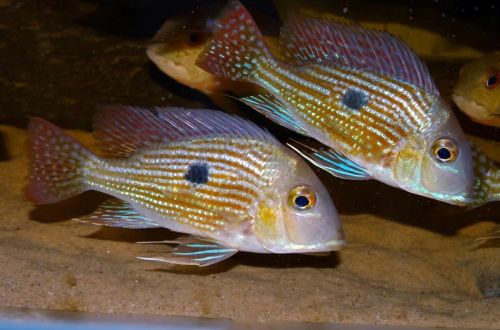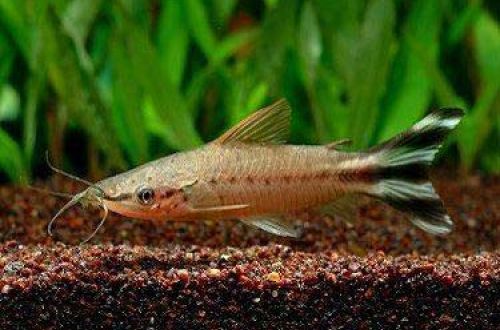
Golets Annamia
Annamia Thua Thien charr, scientific name Annamia thuathienensis, belongs to the Balitoridae (River charr) family. The name of the fish includes two geographical names indicating the region of its habitat. This is Annam – the old name of central Vietnam and the modern province of Thua Thien province.
Not suitable for the general aquarium due to specific conditions. Distributed mainly in Asia, it is practically not represented in the markets of Europe.

Contents
Habitat
It comes from Southeast Asia from the territory of modern Vietnam. It inhabits shallow rivers and streams in large numbers flowing down from the Annam Mountains. The natural habitat is characterized by the presence of rapids in the riverbed and fast, sometimes turbulent currents. The water is clean, transparent, plants grow exclusively along the coast. The substrates are stony with large boulders.
Brief information:
- The volume of the aquarium – from 110 liters.
- Temperature – 16-22°C
- Value pH — 6.0–7.5
- Water hardness – soft (1-10 dGH)
- Substrate type – fine gravel, rocky
- Lighting – bright
- Brackish water – no
- Water movement – moderate / strong
- The size of the fish is 8–10 cm.
- Food – live or frozen food
- Temperament – peaceful
- Content in a group of at least 6–8 individuals
Description
Adult individuals reach a length of about 8–10 cm. The body is elongated and somewhat flattened from above. This body shape helps to cope with turbulent currents. The same purpose is served by large fan-shaped fins, with the help of which the fish seems to be pressed against the smooth surface of the stones. The color is predominantly gray with golden hues. Sexual dimorphism is weakly expressed, it is problematic to distinguish a male from a female.
Outwardly, the Annamiya char Thua Thien is very similar to its closest relative Annamya Normani, which is why they are often confused.
Food
Recommended protein diet of live or frozen foods such as bloodworms, daphnia, brine shrimp. In addition, herbal supplements, such as spirulina flakes, should be present in the diet. Algae growing on aquarium design elements can become a natural additive. Dry foods such as flakes, granules, tablets are used as a source of essential trace elements and vitamins, but are used to a limited extent.
Maintenance and care, arrangement of the aquarium
The optimal size of the aquarium for a group of 6-8 fish starts from 110-120 liters. When keeping, it is important to provide conditions reminiscent of the natural habitat. The design uses rocky soil with several large boulders and snags. The movement of water is created by placing a productive filtration system and / or a special artificial flow system, which you can do yourself. There is no need for live plants, since they will not be able to successfully develop in a strong flow at a relatively low temperature. It is allowed to use unpretentious mosses and ferns fixed on snags.
Like any fish living in running waters, Annamia Thua Thien is intolerant of the accumulation of organic waste and needs oxygen-rich water. Mandatory aquarium maintenance activities are: regular cleaning of the soil and glass, replacement of part of the water (30–50% of the volume) with fresh water, maintaining stable pH and dGH values. It will not be superfluous to install an additional aeration system.
Behavior and Compatibility
Peaceful and calm appearance, however, the special requirements for the habitat impose great restrictions on the choice of neighbors. The content in the group is at least 6–8 individuals. Skirmishes are possible between relatives, but this is part of their social interaction and they do not pose any threat to other fish.
Breeding / breeding
At the time of writing, there were no successful experiments in breeding Annamia in a home aquarium. Fish fry for the aquarium trade are caught in the wild.
Fish diseases
By their nature, non-ornamental fish species that are close to their wild relatives are quite hardy, have high immunity and resistance to various diseases. Health problems can be the result of inappropriate conditions, so before starting treatment, check the quality and parameters of the water. If necessary, bring all values back to normal and only then begin treatment, if necessary. Read more about diseases, their symptoms and methods of treatment in the section “Diseases of aquarium fish”.





